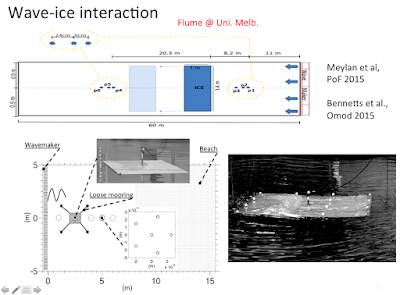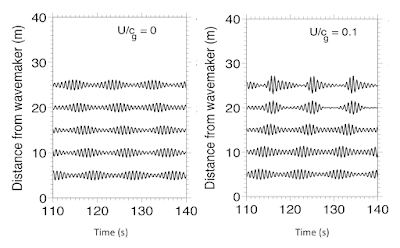Coastal
and Maritime Engineering
Swinburne
University of Technology
Faculty
of Science, Engineering and Technology
Swinburne
University of Technology in collaboration with Nortek will offer a unit on Coastal and Maritime Engineering
(MRE80001) in Semester 2, 2015. This unit is presented by industry and academic
experts and provides an in-depth overview of oceanic
and coastal waves, hydrodynamics, ocean and coastal engineering applications
and numerical modelling (a draft unit outline is presented
below).
This
subject is one of the five subjects in the Graduate Certificate in Port and
Harbour Engineering offered by the Swinburne University. The subject can be
taken as a single unit of study or as a part of the Graduate Certificate, the
first formal Port Engineering qualification in Australia.
Other
core subjects of the Graduate Certificate are Port and Harbour Engineering,
Dredging Engineering, Port Access and Navigation, and Port Structural Design; the
former two are offered in Semester 1, while the latter two are Semester 2 subjects.
None of these five subjects is a pre-requisite to another, and the subjects can
be taken separately:
Students can formally enrol in the MRE80001 unit or in the Graduate Certificate in Engineering/Port
and Harbour and complete the assignment for credits, or can choose to register
and attend the seminars only. The assessment involves three short assignments,
due throughout the second half of the semester.
Full flyer at:
When:
A week of intensive seminars will be held on 14 – 18
September 2015 (36 hours).
Where:
The classes will be held at the Swinburne University of
Technology, Hawthorn campus.
Cost:
Information on tuition fees for the Graduate
Certificate can be found at the following link:
For a single unit of study, fees can be found
at the following link:
How to apply:
All applications are due by 24 August
2015
Application to enrol in Coastal and
Maritime Engineering as a single unit of study:
This will provide you with
recognition of enrolment in this unit. You would receive a Swinburne transcript
with the respective grade for your assessment in this single unit of study.
Successful completion of this unit gains 12.5 points credit towards the
Swinburne’s Graduate Certificate of Engineering/Port and Harbour Engineering
(50 credit points).
For admission,
applicants should have completed a bachelor degree or diploma in engineering,
or have relevant industry experience.
To enrol in Coastal and Maritime
Engineering as a single unit of study or to enrol in the Graduate Certificate, follow the instructions here:
Seminar registration:
To
attend the seminars without submitting any assessment (i.e. seminar only),
complete and return the attached registration form with payment to the Finance
Officer, Faculty of Engineering and Industrial Sciences (contact details are
provided on the form).
Further Information
Enrolment /
registration:
Faculty Office, Faculty of Science, Engineering and
Technology
Telephone: +61 3 9214 8372
For information about
the content of the unit:
Dr Alessandro Toffoli, Faculty of Science, Engineering and
Technology
Telephone: +61 3 9214 5262
Or
Professor Alex Babanin, Faculty of Engineering and
Industrial Sciences
Telephone: +61 3 9214 8033
Tentative detailed outline of MRE80001
(further changes can be expected)
Coastal and Maritime
Engineering
MRE80001
Day 1
Introduction (1 hours)
· Purpose and scope of Coastal and
Maritime Engineering
· Coastal diversity
· Wave types
Linear Wave Theory (4 hours)
·
Mathematical
problem
·
Boundary
conditions
·
Linearization
·
Dispersion
relation
·
Properties
of surface elevation
·
Regular
and Irregular waves
·
Wave
kinematics
·
Orbital
motion
·
Phase
velocity
·
Group
velocity
Nearshore wave transformation (2
hours)
·
Refraction
and long-shore current
·
Diffraction
·
Reflection
·
Shoaling
·
Breaking
Nonlinear waves (1) (1
hours)
·
Nonlinear
terms
·
Second-order
theory
·
Effects
on surface elevation
Day 2
Nonlinear waves (2) (1
hours)
·
Effects
on wave orbital motion
·
Shallow
water waves
Long waves (2 hour)
·
Infragravity
waves
·
Storm
Surges
·
Seiches
·
Tides
Wave spectrum (1 hours)
·
Definition
of wave spectrum
·
Spectral
parameters
·
Model
spectra
·
1D
·
2D
Wave measurements (2 hours)
·
Buoys
·
Tidal
gauges
·
Downlooking
lasers
·
Pressure
sensors
·
Acoustic
Doppler Current Profiler (ADCP)
·
Anemometers
·
Remote
sensing
Analysis of wave records (1 hours)
·
Time
series analysis
·
Spectral
analysis
Day 3
Analysis of wave records (2 hours)
·
Wave
statistics
·
Short
term stats
·
Long
term stats
Wave impacts on coastal and ocean engineering
structures (2 hours)
·
Design
sea state
·
Wave
forces
·
Run-ups
·
Marine
Renewable Energy
Hydrodynamics and wave modelling (1) (2
hours)
·
Introduction
to MIKE21
·
Theoretical
concept
·
Numerical
schemes
Laboratory demonstration (2
hours)
·
Wave
flume
·
Wave
properties
·
Wave
breaking
Day 4
Hydrodynamics and wave modelling (2) (8 hours)
·
Set
up of the hydrodynamics and wave modules for Port Phillip Bay
·
Simulations
of wave characteristics:
o
Water
level
o
Surface
waves
o
Currents
Day 5
Hydrodynamics and wave modelling (3) (3 hours)
·
Exercises
Data Analysis (2 hours)
·
Computer
aided analysis
·
Time
domain analysis
·
Spectral
domain analysis
Seminar Registration
Form
Please do not use this form
if you wish to enrol in the subject for credit.
Seminar Details
Subject: MRE80001 Coastal and
Maritime Engineering
Dates: 14-18 September
2015
Registration fee: $2,900 GST Excl.
|
|
Registration Details
Surname:
|
First name:
|
|
Street Address:
|
|
Suburb:
|
Postcode:
|
|
Email:
|
|
Contact Numbers:
|
Business
|
Mobile
|
|
Home
|
Fax
|
|
|
|
|
|
|
|
Will your Employer pay for this course? YES NO
If NO, please proceed to
Payment Details. If YES,
confirmation of payment from your Employer is required by providing a Purchase
Order number or Credit card details and the following information:
Company name:
|
|
Company address:
|
|
Email:
|
Telephone:
|
|
Payment
Details
AMOUNT $
.....................................
|
|
Method of Payment (circle one):
|
Cash
|
Money Order
|
Credit Card: VISA / MasterCard / AMEX
|
|
CREDIT CARD DETAILS
|
Credit card number:
|
|
Name on card:
|
Expiry date:
|
|
Signature:
|
|
|
|
|
|
|
|
|
Submit
form with payment by post, email or in person to:
Caroline
Ditchburn, Research Centre Co-Ordinator (COEST)
Swinburne
University of Technology
Faculty of
Science, Engineering and Technology (COEST)
PO Box 218
Hawthorn, Victoria 3122, Australia
OFFICE USE ONLY
CREDIT ACCOUNT
Finance Manager Authorisation:
…………………………………………....................





